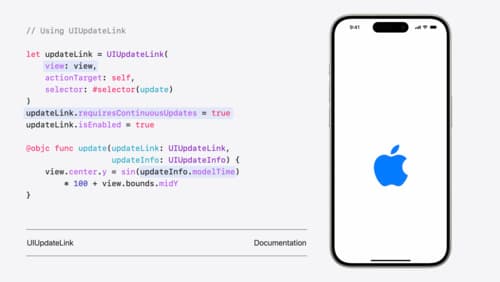What is the difference between uikit and swiftui
Asked on 2024-08-12
1 search
The difference between UIKit and SwiftUI primarily lies in their design paradigms and usage:
-
Design Paradigm:
- UIKit: It is an imperative, object-oriented framework. You define the sequence of steps to create and update the user interface. UIKit has been around for a long time and provides a rich set of capabilities for building iOS apps.
- SwiftUI: It is a declarative framework. You describe what the UI should look like, and SwiftUI takes care of rendering it. This approach allows for more concise and readable code, focusing on the "what" rather than the "how."
-
Interoperability:
- SwiftUI is designed to work seamlessly with UIKit and AppKit. You can use
UIViewRepresentableto integrate UIKit views into SwiftUI andUIHostingControllerto embed SwiftUI views in UIKit. - This interoperability allows developers to incrementally adopt SwiftUI in existing UIKit-based apps.
- SwiftUI is designed to work seamlessly with UIKit and AppKit. You can use
-
Features and Capabilities:
- UIKit: Offers a wide range of features and has been the traditional choice for iOS app development. It includes detailed control over the UI and is well-suited for complex, custom interfaces.
- SwiftUI: Provides a modern approach with features like automatic support for dark mode, dynamic type, and more. It is designed to work across all Apple platforms, making it easier to share code between iOS, macOS, watchOS, and tvOS.
-
Animation and Gesture Recognition:
- SwiftUI allows for more straightforward animations and gesture handling, which can now be used to animate UIKit views as well, enhancing interoperability.
For more details on SwiftUI's capabilities and its interoperability with UIKit, you can refer to the SwiftUI essentials session, specifically the "SDK interoperability" chapter. Additionally, the Platforms State of the Union session provides insights into SwiftUI's role in Apple's ecosystem.

SwiftUI essentials
Join us on a tour of SwiftUI, Apple’s declarative user interface framework. Learn essential concepts for building apps in SwiftUI, like views, state variables, and layout. Discover the breadth of APIs for building fully featured experiences and crafting unique custom components. Whether you’re brand new to SwiftUI or an experienced developer, you’ll learn how to take advantage of what SwiftUI has to offer when building great apps.

Platforms State of the Union
Discover the newest advancements on Apple platforms.

What’s new in UIKit
Explore everything new in UIKit, including tab and document launch experiences, transitions, and text and input changes. We’ll also discuss better-than-ever interoperability between UIKit and SwiftUI animations and gestures, as well as general improvements throughout UIKit.
